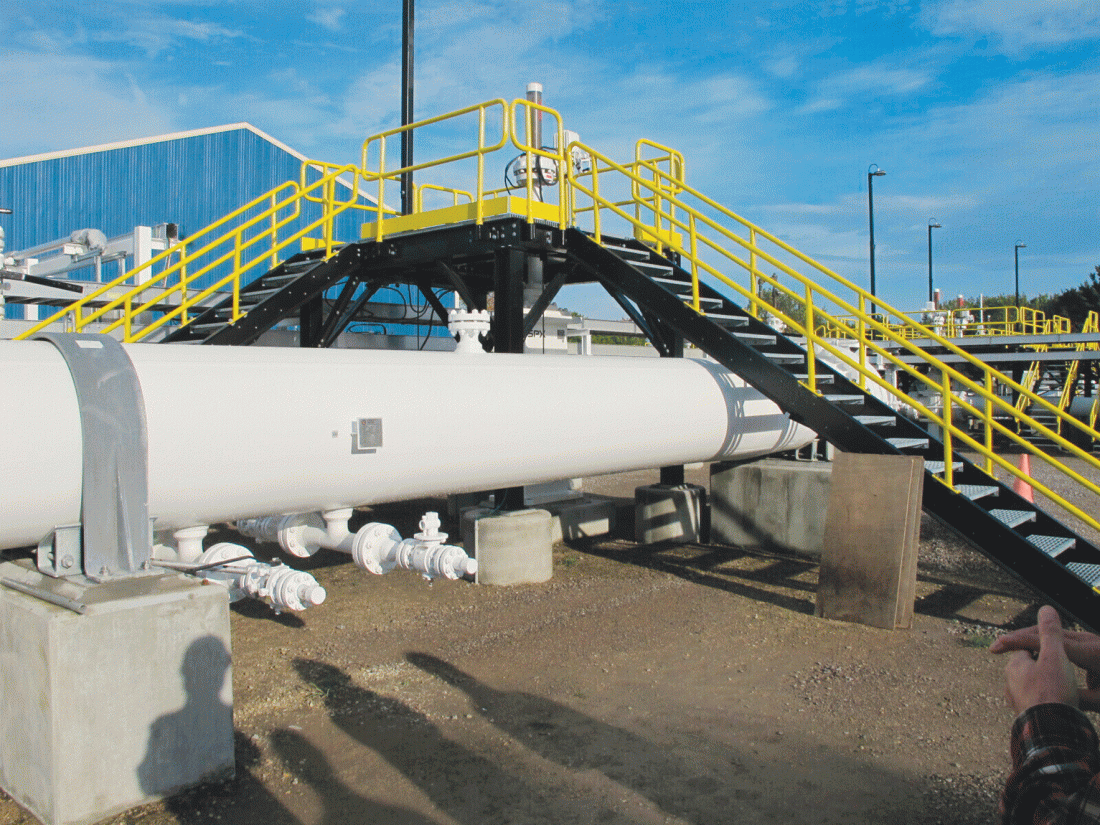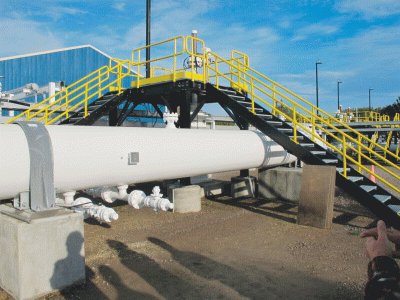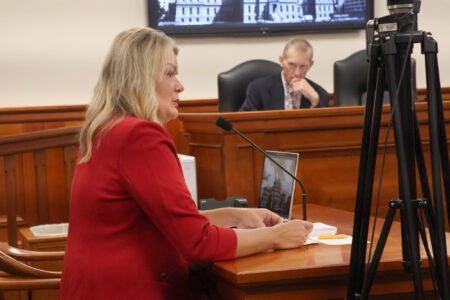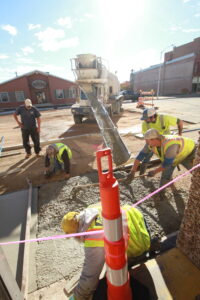Corps of Engineers approves Enbridge tunnel plans for Line 5
- This October 2016 file photo is an aboveground section of Enbridge’s Line 5 at the Mackinaw City pump station. (AP photo, file)
- The Mackinac Bridge over the Straits of Mackinac. (AP Photo, file)

This October 2016 file photo is an aboveground section of Enbridge’s Line 5 at the Mackinaw City pump station. (AP photo, file)
The U.S. Army Corps of Engineers on Wednesday approved energy company Enbridge’s plans to encase a segment of an aging oil pipeline that runs beneath a Great Lakes channel, pushing past its own findings that construction could ruin the environmentally sensitive area.
The corps initially planned to issue a permitting decision early next year. The agency fast-tracked the project in April after President Donald Trump ordered federal agencies to identify energy projects for expedited emergency permitting.
“The approval of the Enbridge Line 5 reroute application is a great success and will advance the President’s energy dominance agenda for America,” Adam Telle, assistant secretary of the Army for civil works, said in a statement.
The corps released an environmental analysis in May that concluded tunnel construction would protect the pipeline but the work could destroy wetlands and archeological sites, harm bat habitats, disturb aquatic life, mar lake vistas and potentially trigger an underwater explosion.
The corps still issued Enbridge a permit, saying Wednesday the application complied with all applicable federal laws and regulations.

The Mackinac Bridge over the Straits of Mackinac. (AP Photo, file)
Calgary, Alberta-based Enbridge did not immediately respond to a request for comment Wednesday.
Enbridge now needs only a permit from the Michigan Department of Environment, Great Lakes and Energy to begin the $500 million-plus project. Environmentalists have been pressuring the state to deny the application.
Enbridge has been using the Line 5 pipeline to transport crude oil and natural gas liquids between Superior, Wisconsin, and Sarnia, Ontario, since 1953. Roughly 4 miles of the pipeline runs along the bottom of the Straits of Mackinac, a channel linking Lake Michigan and Lake Huron.
Concerns about the segment rupturing and causing a catastrophic spill have been growing since 2017, when Enbridge officials revealed that engineers had known about gaps in the segment’s coating for three years. A boat anchor damaged the line in 2018, further stoking fears.
Enbridge officials maintain the segment is structurally sound. Still, they reached a deal with then-Michigan Gov. Rick Snyder’s administration in 2018 calling for the company to build a protective tunnel around the segment.
Conservationists and a number of Native American tribes have balked at the proposal, calling it too risky and demanding Enbridge simply shut down the pipeline. The project has become entangled in multiple lawsuits.
Michigan Attorney General Dana Nessel, a Democrat, sued in 2019 seeking to void the easement that allows Enbridge to operate the pipeline in the straits. The U.S. Supreme Court is currently weighing whether the case belongs in federal or state court.
Gov. Gretchen Whitmer, a Democrat, ordered her regulators in 2020 to revoke the easement allowing the segment to operate in the straits. Enbridge filed a federal lawsuit that same year seeking to invalidate the order. Trump has inserted himself into that dispute, too. His administration filed briefs in September arguing Whitmer interfered with U.S. foreign policy when she revoked the easements.
The Michigan Public Service Commission issued permits in 2023, prompting another lawsuit from environmental groups and tribes. A Michigan appeals court upheld the permits this past February.
———
AP reporter Steve Karnowski contributed to this story.







